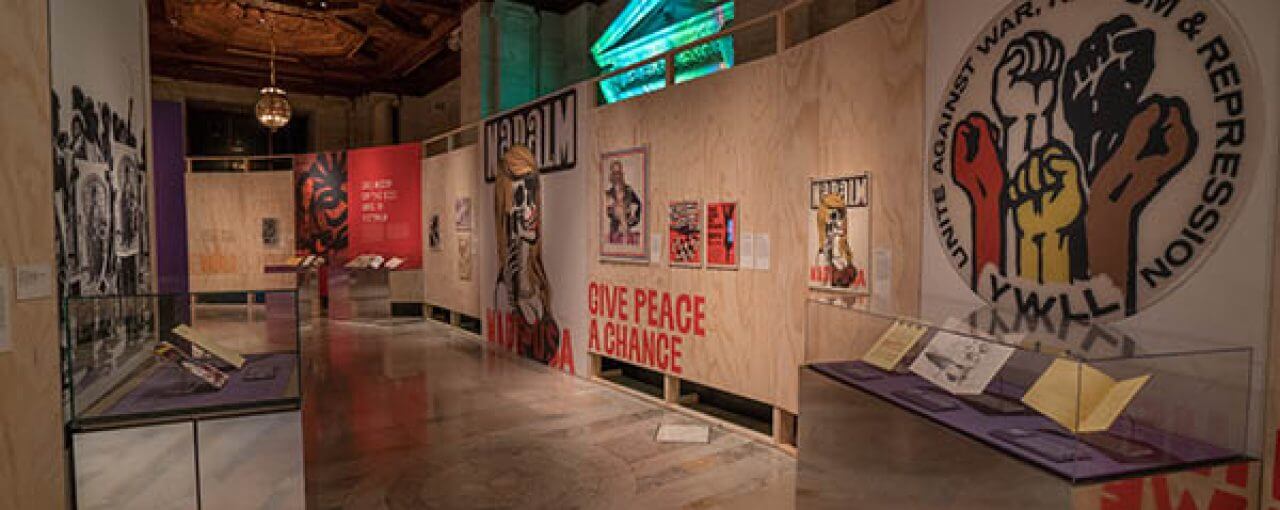Summer 2018 Highlights
By Emilia Dubicki, WTP Art Correspondent
Four times a year, WTP art correspondents from around the country will report back on the previous season, with images from exhibitions you otherwise might have missed, and their own insights into these varied venues.
I was in midtown on a broiling August weekday. New York City is tough in the summer, but luckily there are plenty of air-conditioned places to duck into, like the New York Public Library’s Stephen A. Schwarzman Building at 5th Avenue and 42nd Street. The landmark alone, with its two renowned marble lions, one named “Patience,” the other “Fortitude,” is worth the visit, but I was going to see You Say You Want a Revolution: Remembering the 60s.
This comprehensive multimedia exhibition in the library’s darkened, airy Gottesman Hall covers the counterculture in the 1960s through early 1970s, with items on display drawn exclusively from the library’s collections, including Timothy Leary’s notes on acid trips, a letter from Gloria Steinem to Abe Rosenthal of the New York Times, footage of the Woodstock music festival, and posters protesting the Vietnam War. A pre-internet environment of activism is represented through various formats. The show is organized by categories: Consciousness, Sexuality and Gender, The New Left, War in Vietnam, Civil Rights and Black Power, Communal Life, and 60s Music. The walls of two listening rooms are covered with albums, and it’s quite heady to see so many artists with staying power from this era, not to mention the actual artwork. Blues, rock, folk, jazz all permeated the counter-culture movements. On one wall, there’s a large reminder to “Start Livin,” and on another, the famous photo, enlarged, of Patty Hearst with a machine gun as the Symbionese Liberation Army’s Tania.
Display cases hold Dylan’s handwritten lyrics, Kerouac’s typewritten and edited On the Road manuscript page, political buttons, photographs, magazines, and letters. Wall text gives background to the various themes and movements, while slogans like “Today is the First Day of the Rest of Your Life” are affixed to simple unfinished plywood panels. Psychedelic artwork spans wall space, making one long for the romanticized “Summer of Love.” A large wall image of a red, white, and blue political pin reads “If You Are Not Part of the Solution You are Part of the Problem.” Much of the iconography of the counterculture was created and popularized in the San Francisco Oracle, with featured subjects like Eastern spirituality, psychedelics, astrology, the occult, and planetary consciousness.
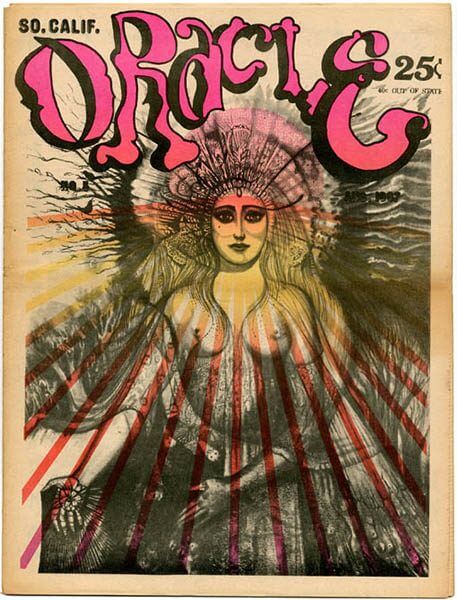
There is a reproduction of Thoreau’s daguerreotype and a page of his handwritten manuscript from his lecture “Walking.” Thoreau’s self-sufficiency while living in nature made him a hippie hero. The line, “The discipline of the schools or of business can never impart such serenity to the mind as the contemplation of natural phenomena,” is timeless. The issues that moved the counterculture to activism are still with us today—civil rights, women’s rights, gay rights, legalizing marijuana, the anti-war movement, corporate greed, and protecting the environment. We see the past in the present. Are the times changing?
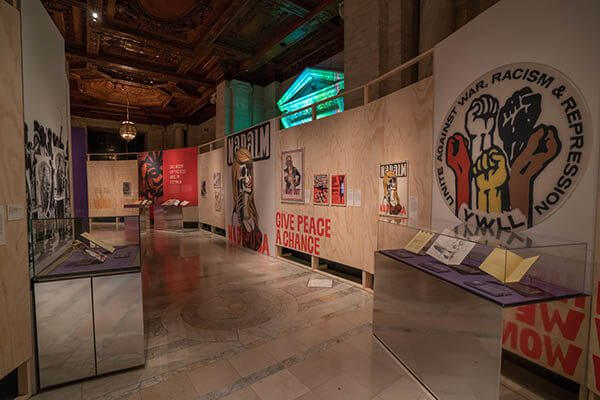
The NYPL system regularly holds exhibits, free to the public, at city branches.
Walking through the hot soup-like air, I headed to the Museum of Modern Art where people filled the cooled lobby. I made my way outside to the Abby Aldrich Rockefeller Sculpture Garden where I appeared to be the only brave soul taking in the installations in If Everything Is Sculpture Why Make Sculpture? Artist’s Choice: Peter Fischli.
Initiated in 1989, the Artist’s Choice series invites contemporary artists to organize exhibitions drawn from MoMA’s collection. Fischli is the thirteenth artist to participate in the series, and the first to do so in the sculpture garden. The Philip Johnson–designed garden is a courtyard surrounded by MoMA’s buildings and a wall to the street. Here, along with the sculptural installations, are also trees and fountains.
Fischli borrows a question inscribed on a painting displayed outdoors by artist Ben Vautier: “If everything is sculpture why make sculpture?” “Snowman,” a sculpture composed of an actual snowman encased in a glass-door freezer, by Peter Fischli and his longtime collaborator David Weiss, along with nearly twenty objects selected by Fischli, give the viewer much to contemplate.
The first sculpture greeting you is Katharina Fritsch’s “Yellow Madonna” from Group of Figures. Fischli chose to separate her from the rest of the group. This Madonna stands benevolent, hands folded in prayer, on the white marble floor in full sun. The statue is lacquered in bright yellow, serving today as a cautionary heat advisory. Tony Smith’s large structural “Moondog,” with surfaces reflecting the light, takes on various configurations from different angles. Franz West’s loopy, open interactive sculptures, the yellow-colored “Lotus” and peachy orange “Maya’s Dream,” wait for someone to sit or climb on them. Some of the other sculptures include bronzes by Matisse, Picasso, William Tucker, and Aristide Maillot.
The scene stealer, though, due to the season, is the “Snowman,” which is an updated version of a 1987 site-specific work by Fischli and Weiss that was commissioned by a German thermic power plant whose energy in the form of heat was used to keep the snowman perpetually frozen. A snowman is, as Fischli observes, a “sculpture that almost anyone can make” simply by rolling three spheres of snow and setting them atop one another. Fischli and Weiss’s “Snowman” is a study in contradictions dependent on technology for its year-round subsistence. I wish he’d slide over a bit in his freezer and make room for the “Yellow Madonna.”
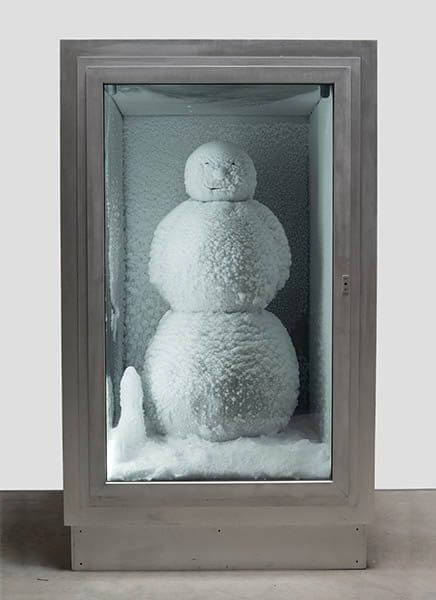
A little further uptown at 3 West 57th Street, Cavalier Gallery is the first in a series of exhibitions dedicated to the legacy of the 57th Street gallery district, the longest standing gallery district in New York City. Part I of the series opened this summer with a focus on Abstract Expressionism and Color Field painting from the 1950s–1980s.
57th Street: America’s Artistic Legacy, Part I [New York, New York] features over twenty important artists from this period, including Hans Hofmann, George McNeil, Esteban Vicente, Gene Davis, Cleve Gray, Mercedes Matter, Larry Zox, Yvonne Thomas, Albert Stadler, Syd Solomon, Vaclav Vytlacil, Reuben Nakian, Ann Purcell, Stephen Pace, John Opper, Perle Fine, Dan Christensen, Walter Darby Bannard, Paul Jenkins, Robert Goodnough, Friedel Dzubas and Wolf Kahn.
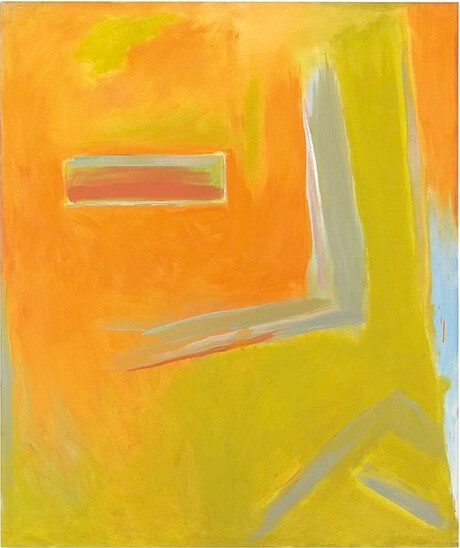
The exhibit, hung salon style, in a large ground floor space (not Cavalier’s permanent fourth floor location in the same building), is a nice survey of painters working in a range of abstract styles: geometric, lyrical, figurative, calligraphic, expressionist, and colorists too. Esteban Vicente’s “Untitled,” with its orange-into-yellow and fleeting-gray forms, and a swath of pale blue on the right edge, evokes the spirit of summer. In Ann Purcell’s aptly titled “Lagniappe,” an orange form floats on blues and white. What is this boldly-colored shape? An extra gift of light hitting the landscape perhaps? Cleve Gray’s large atmospheric painting “Silver Song,” has a strong stroke of yellow and aluminum paint, and bronze on white. A small pastel on paper by Yvonne Thomas is a concentrated beauty in emerald and red, with center of pink, and a scribble of purple. The sense of scale in this 15” x 22” piece is vast. Part II of Cavalier’s exhibition series is planned for September.
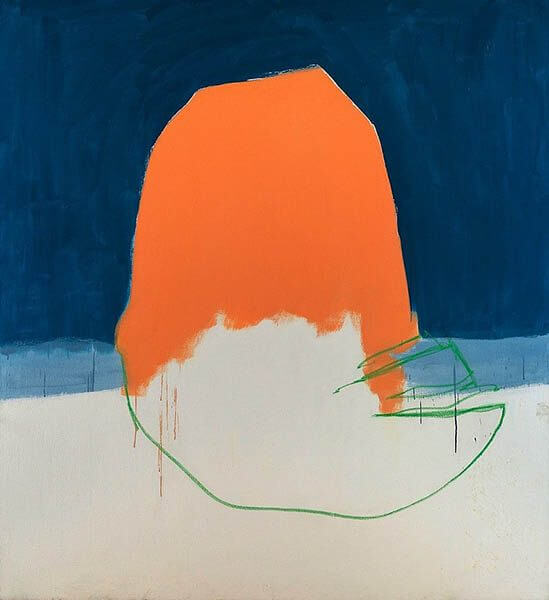
At 19 East 66th Street, Blum & Poe had an exhibition of new paintings by Glasgow-based artist Andrew Kerr, his first show in New York City. Intimate in size, the twenty-seven works on paper are intriguing and subtle. I could make out an image or scene here and there, but preferred to let the mysteries of each painting to prevail. There is a layering of acrylic paint in earth tones and pastels, with some pieces collaged in. A few works are pinned to the wall, hovering slightly above the surface, or mounted on Kerr’s light, quirky wooden constructions. Individually the works seem somewhat fragile, but as a grouping, their mysterious story gathers strength, painted in a seemingly foreign language of imagery.
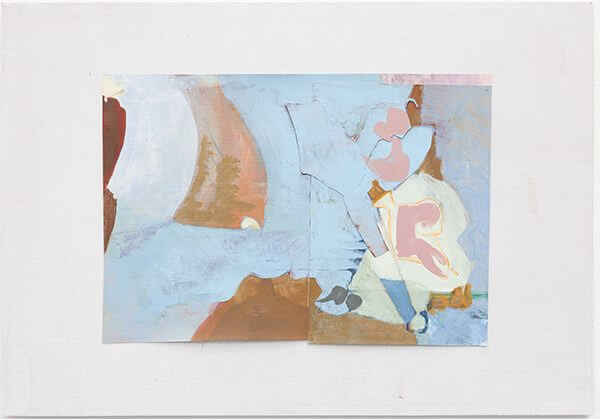
A small painting is difficult to execute, with a limited surface on which to work. Visually the viewer takes in the painting all at once. Kerr’s new paintings are addictive. Wanting to, and also not wanting to, figure out what’s going on in them is their appeal—maybe a figure here, a circus tent, curtains and a window, something washed up on shore, a view from atop a building? Then there are the light wooden constructions framing and supporting some of the paintings that require analysis and appreciation. This body of new works seems part of a meditative studio process, both in the number of pieces and in the intricacies of each painting.
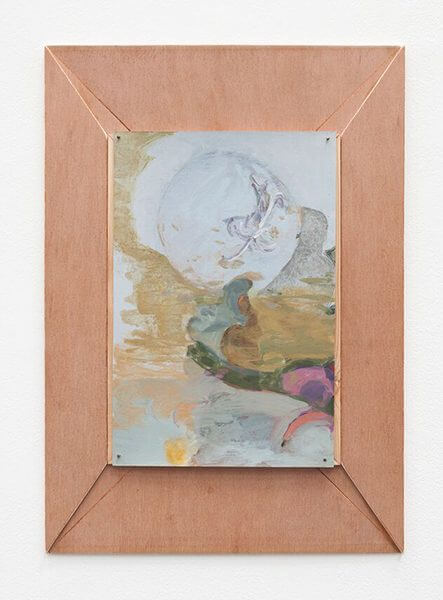
What I enjoy is seeing art in New York City’s differing venues, work from the historical to the contemporary, from the psychedelic hot pink swirls in the library, to the small soft curves and turns in Kerr’s works. I like thinking about those abstract artists, part of a culture that was so counter to traditional art, in the modern 57th street galleries. Buildings like the Library are masterpieces in themselves, but then you enter a small contemporary gallery and can still feel a vastness in the worlds that open up within individual paintings, a vastness like the sky above MoMA’s open-air sculpture garden where you feel, being in that rectangular space, a piece of a grander work. This is Thoreau’s vision adapted for our time in New York City.
If you are interested in becoming an art correspondent for WTP, please inquire at wtp@thewoventalepress.net
Copyright 2018 Woven Tale Press LLC. All Rights Reserved.

